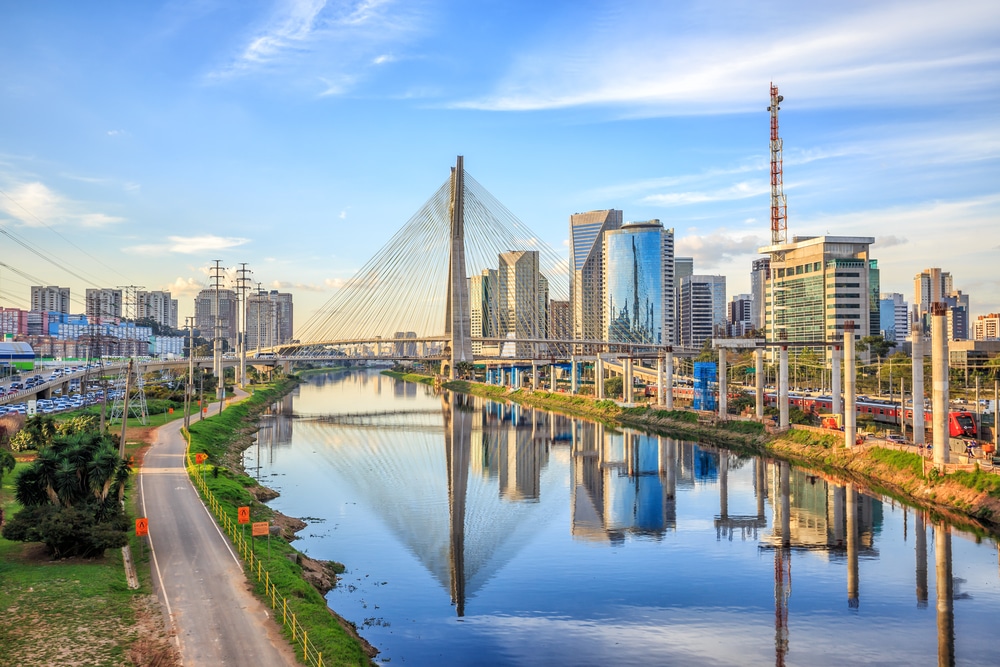
Sao Paulo is not only the largest city in Brazil, but even in the entire southern hemisphere. With 12 million inhabitants, the metropolis is one and a half times the size of New York and the definition of a concrete jungle. High-rise building after high-rise building to form an almost unmanageable sea of buildings. Basically, Sao Paulo is mostly overshadowed by Rio de Janeiro in terms of tourism. But the city in southeastern Brazil has much more to offer than just gray blocks and a mere reputation as a financial center.
Attractions in Sao Paulo
Buildings and facilities
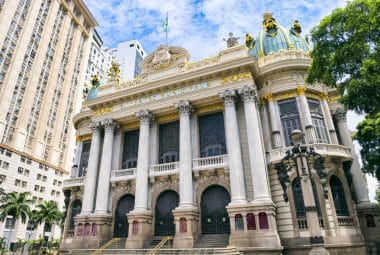
Life in the metropolis revolves around Avenida Paulista, an almost three-kilometre-long street in the centre. It symbolises the different facets of the city:
While one financial center follows the next, you will also find cultural institutions such as the Museu de Arte de São Paulo. On Sundays, the road is closed to traffic, allowing visitors to attend performances and concerts, or simply stroll along this artery. If you come here by bike, you only have to make a small detour to discover the Parque do Ibirapuera , which is only the second largest, but perhaps the most beautiful park in the city.
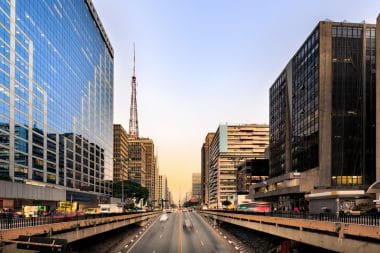
Another landmark of Sao Paulo is the Gothic cathedral, which is one of the largest in the world. Almost 8000 people can be accommodated in the more than 500-year-old building.
The Teatro Municipal is also not to be missed, as the building is particularly noble and is one of the most important theatres and operas in the world.
To get an overview of the seemingly endless sea of houses, you should visit either the Edifício do Banespa or the Edifício Itália . The latter is the second tallest building in the city at 168 meters high and has a viewpoint and a panoramic restaurant.
Neighbourhoods in Sao Paulo
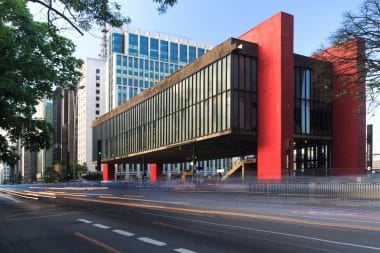
The city is multicultural and still strongly influenced by the various immigrant cultures, including the German, Italian, Portuguese or Lebanese, among others, who often settled in their own quarters.
São Paulo is first and foremost a collection of numerous neighborhoods and individual cities that have grown together over time to form a large whole.
Many of these districts have developed into cool trendy districts that invite you to explore extensively.
In Liberdade (Freedoms) you suddenly feel like you are in the middle of Japan, as the district is considered the center of the Japanese diaspora, which, by the way, is as large in Brazil in no other country in the world. Ideal for testing culinary delicacies and securing some bargains at a Japanese market.
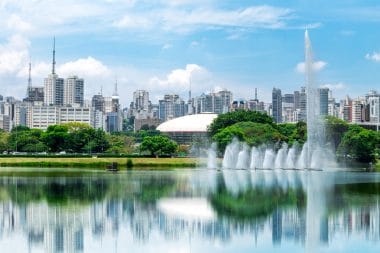
In the evening, the best place to go out is in the Vila Madalena district, where tourists and locals alike have a huge selection of restaurants, bars and clubs.
Another important part of the city is Ipiranga, where you will find the Paulista Historical Museum (Paulista refers to a resident of the state of São Paulo or sometimes the inhabitants of the city itself) and the Parque da Independência (Independence Park). This name is due to the fact that Emperor Pedro I proclaimed Brazilian independence from Portugal here in 1822.
Sports in Sao Paulo
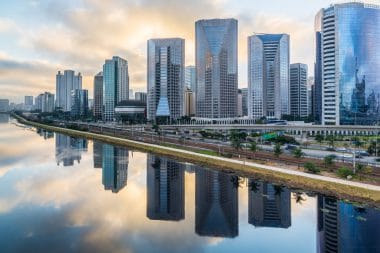
Brazil is also inextricably linked with football. Accordingly, a visit to the Museu do Futebol, i.e. the football museum, is indispensable. You can see the national sport in action at FC Sao Paulo’s Estádio do Morumbi or at the Arena Corinthians of city rivals Corinthians São Paulo.
Just outside the city, in the suburb of Interlagos, the best motorsport drivers compete in Formula 1 at the Autódromo José Carlos Pace . The greatest legend of Brazilian motorsport, Ayrton Senna, who died in 1994, was also born in Sao Paulo, as were Rubens Barrichello and Felipe Massa.
Culinary
As the “International Capital of Gastronomy”, Sao Paulo is on a par with Paris, New York and Tokyo. The multicultural cuisine is often given a typical Brazilian twist.
Also typical of the country is the so-called rodízio, where you pay a fixed price and then get various types of meat and sometimes even pizza brought to the table by the waiter.
Safety in Sao Paulo
Finally, some good news for all tourists: Despite its size, the city is considered quite safe by Brazilian standards, especially in terms of the number of homicides.
Facts
- São Paulo is the most populous city in Brazil and the ninth largest city in the world.
- The city of São Paulo has an area of 1,521 square kilometers.
- São Paulo has one of the highest population densities in the world, with an average of over 7,800 people per square kilometer.
- The city of São Paulo has a diverse population, with immigrants from different countries, including Italy, Portugal, Japan, and Lebanon.
- São Paulo is an important business location in Brazil, with a gross domestic product (GDP) of more than 700 billion US dollars in 2020.
- The city is also a major transportation hub, with Brazil’s largest airport, São Paulo-Guarulhos International Airport.
- São Paulo has one of the largest Japanese communities outside of Japan.
- The city is known for its lively street art scene and has many impressive murals.
- The climate in São Paulo is subtropical, with mild winters and hot summers.
- São Paulo is home to the annual São Paulo Fashion Week, one of the largest fashion weeks in Latin America.
Museums in Sao Paulo
- São Paulo Museum of Art (MASP) – This is one of the city’s best-known museums and has an extensive collection of European and Brazilian art, including works by Rembrandt, Picasso, and Van Gogh.
- Pinacoteca do Estado de São Paulo – Dedicated to Brazilian art, this museum is housed in a beautiful 19th-century building. The collection includes works by important Brazilian artists such as Candido Portinari and Tarsila do Amaral.
- Museum of the Portuguese Language – Located in the historic Luz train station, this museum is dedicated to the Portuguese language and its history. It features interactive exhibitions and multimedia installations.
- Museum of Football – Since Brazil is known for its love of football, this museum is a must-see for football enthusiasts. It offers exhibitions on the history of Brazilian football and its best players.
- Afro Brasil Museum – Dedicated to Afro-Brazilian culture and history, this museum focuses on the contributions of African slaves to Brazilian society.
- Museum of Japanese Immigration – This museum tells the story of Japanese immigration to Brazil and features exhibits on Japanese culture and tradition.
- Museum of the Resistance of São Paulo – This museum is located in the building that was a political prison during the military dictatorship in Brazil. It offers exhibitions on the history of political resistance in São Paulo and Brazil.

